
Malnutrition, along with impaired nutrient uptake, leads to the development of gout. The disease develops when the level of uric acid in the blood exceeds the allowable limits (420 μmol / l for men, 350 μmol / l for women). Disruption of metabolic processes leads to the deposition of salts of this acid on the intestinal wall, blood vessels, joint surfaces and damage to vital organs of human life.
Over time, the disease often becomes chronic with recurrences. In the acute period, patients feel unbearable pain at the site of localization of the pathological process. Diet for gout helps to normalize uric acid levels and reduce the incidence of relapses.
Why diet for gout?
An important task of therapeutic measures is to reduce the nature of the disease, the frequency of its manifestations. This can be achieved by reducing uric acid in the body.
The development of gout attacks is caused by:
- consumption of foods high in purines;
- metabolic disease.
Dietary optimization allows you to begin the process of proper assimilation and excretion of substances. Therapeutic measures aimed at eliminating the causes of the development of the disease are closely linked with compliance with certain food addiction restrictions. With the help of a properly designed diet menu, you can slow down the development of the disease.
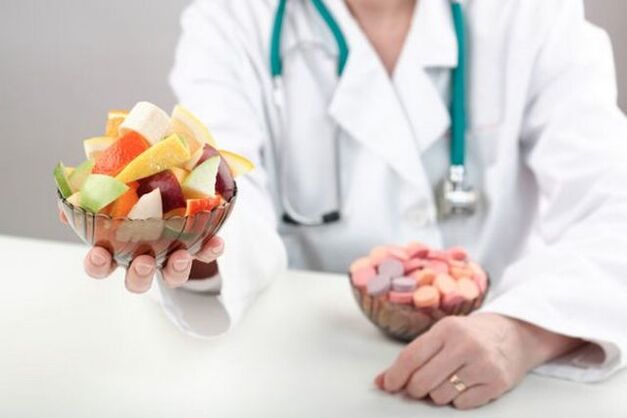
The food that makes up a person's daily diet should include foods that are high in nutrients.
Nutritional therapy for gout aims to reduce symptomatic manifestations by eliminating the food components that provoke them. The products that a person eats every day generally have a great impact on his health and are responsible for the chemical processes that take place in the human body throughout his life.
What not to eat with gout?
According to research, scientists have identified a list of products that directly stimulate the initial development and subsequent development of the disease.
The following is a list of things not to eat for gout:
- smoked spicy cheese and cheese products;
- cholesterol-rich meat and bone products (cellulose, nails, buldyzhki of young animals and pigs);
- meat and bone oils, ear;
- high-fat fish (sardines, sprats);
- pickled vegetables, pickled fruits (cabbage, watermelon, cucumber, apple);
- hot, cold smoked products;
- legumes (peas, beans, soybeans, lentils);
- greens with oxalic acid (spinach leaves, sorrel, rhubarb root);
- hot spices, sauces;
- some types of vegetable crops (Brussels sprouts and cauliflower, radishes);
- internal organs of animals taken during carcass cutting (kidneys, liver, lungs, heart, brain);
- oatmeal;
- confectionery oil products;
- alcohol of any percentage;
- fruits and berries (grapes, raspberries, figs);
- hot, spicy and essential spices (bay leaves, horseradish, chili-pepper);
- animal fats and fat products (lard, margarine, lard);
- canned meat, fish and vegetable products.
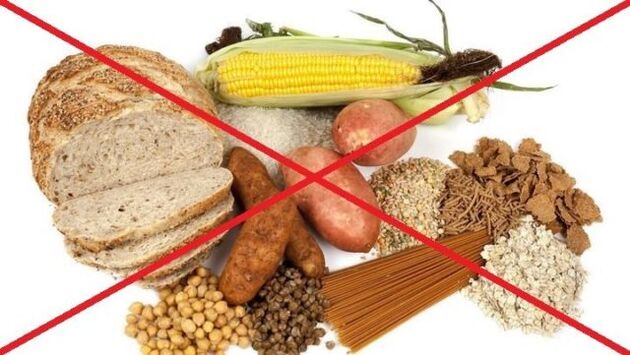
If the diet is not balanced or if there is too much fatty, spicy or heavy food for the digestive system, then a person's metabolism may be disturbed.
List of products recommended for restriction:
- coffee, strong tea;
- butter;
- plum;
- dark vegetables (eggplant, tomatoes, peppers);
- table salt, powdered sugar;
- fungi (only in remission).
It is important to eliminate the above foods from the diet for a long time to prevent an attack and at the same time maintain a state of remission.
What can you eat with gout?
List of foods recommended for patients with this disease:
- diet meat products (rabbit, poultry, lean beef);
- lean white fish (walking, rye, cod, pollock);
- bran and rye bread;
- chicken eggs (excluding yolks);
- cereals (rice, wheat, buckwheat, millet, pearl barley);
- fresh vegetables (beets, carrots, cucumbers, cabbage, potatoes);
- seasonal fruits, berries (watermelon, melon, apricot, strawberry, peach, cherry, blackberry, green apple);
- pasta;
- nuts (hazelnuts, walnuts, cedar);
- herbal teas and decoctions (Dubrovnik, basil, catnip);
- fermented dairy products, cottage cheese;
- freshly squeezed juices, fruit drinks, compotes;
- baked tomatoes;
- spices (turmeric, dill, basil);
- vegetable oil (olive, canola).
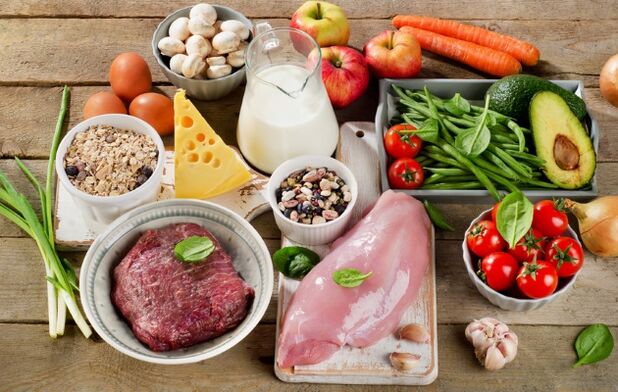
Nutritional treatment for gout will help the patient to quickly get rid of unpleasant and painful symptoms at home.
In limited quantities, natural honey is good for gout. This product is suitable as a sugar substitute.
Honey has many useful properties:
- immunostimulating;
- antioxidant;
- improving metabolic processes;
- bactericidal.
You should not abuse this bee product in the acute period. Patients with this disease should eat foods rich in vitamins, trace elements, amino acids. A useful supplement for gout is fish oil.
General food rules
Removing certain forbidden foods from your regular menu does not guarantee instant relief. In addition, the list of products varies depending on the stage and severity of the disease. Thus, nutrition for gout during exacerbations involves stricter restrictions than during remission.
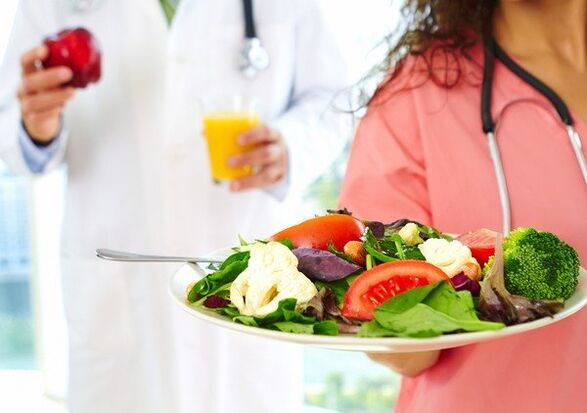
There are general guidelines for patients with this disease, which are important to follow in diet therapy:
- Eat in small portions several times a day with small breaks (5-6 times). Starvation causes an increase in acetone in the urine. And this can aggravate the course of the disease.
- Chew food well, do not eat too much.
- Limit the amount of salt used in cooking (up to 5 grams per day). Salt has the property of retaining fluid in the tissues, which leads to the deposition of uric acid salts.
- Optimize body fluid balance. To do this, it is recommended to drink at least 2 liters a day.
- Organize fasting days. Preferably vegetables, milk and fruits (except those prohibited for consumption).
- Follow long-term restrictions, as short-term use of a therapeutic diet is ineffective.
People suffering from severe metabolic diseases and with a history of diabetes and gout should exclude containers that cause a jump in uric acid and insulin levels. The diet for gout and diabetes is designed to reduce these indicators to prevent the development of exacerbations and complications.
How is food prepared properly?
Restricting the grocery list is not the only item to follow. It is important to choose the right cooking method when preparing your meals.
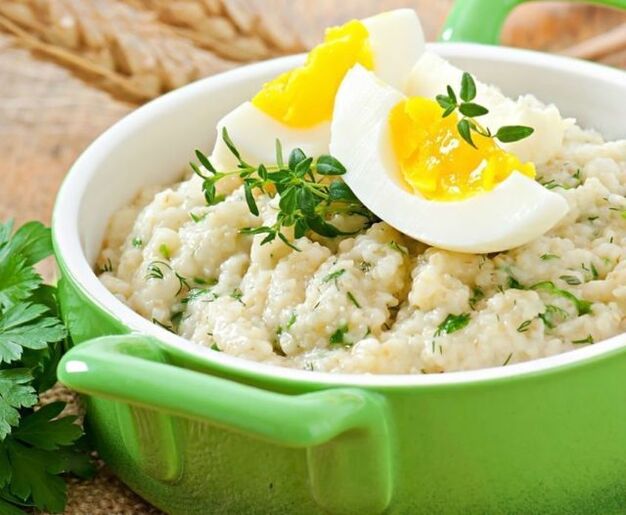
There are no special requirements for the preparation of products, except for meat processing.
Cooking is allowed in the following ways:
- for a pair;
- baking;
- extinguishing;
- hot;
- slowness.
It is forbidden to cook:
- fry;
- to smoke;
- salting and pickling;
- fermentation.
Do not use stale, burnt food. The temperature of the food consumed should be optimal for the food and should not exceed 40 degrees Celsius. Food should not be rough and hard. If necessary, individual dishes are chopped with a mixer.
Effective diet: menu for every day
In terms of the content of essential components (protein-carbohydrate-fat balance), calories, vitamins, trace elements, amino acids, medical nutrition should meet the physiological needs of patients.
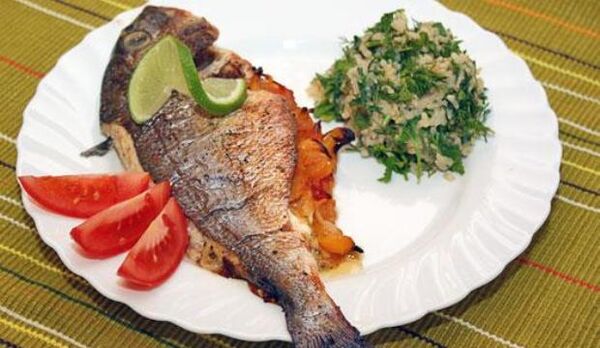
Approximate diet for gout and high uric acid:
1 day
First breakfast: boiled cod, mashed potatoes, black bread, white cabbage salad, seasoned with sour cream, breakfast with a cup of non-toxic coffee.
Second breakfast: cottage cheese casserole, boiled egg, bran bread, tea.
Dinner: vegetarian soup with fried roots and potatoes, beef stew, buckwheat porridge, fresh cucumber, 1 apple.
Meals: carrot cutlet, pasta, milk, biscuits.
Night: 200 ml of kefir.
2 nd day
First breakfast: baked white cabbage, 1 boiled egg, black bread, cappuccino.
Second breakfast: cappuccino, biscuits.
Lunch: lean borscht, bran bread, baked poultry fillet, boiled rice, fruit jelly.
To eat: baked potatoes with vegetables, vegetable casserole, bran bread with butter, a glass of broth.
Night: 250 ml of whipped milk.

3rd day
First breakfast: vegetable salad (white cabbage, carrots, apples), weak coffee.
Second breakfast: cottage cheese with sour cream, hip juice.
Lunch: barley soup with sour cream, steamed cutlet, mashed potatoes, berry jelly, whole grain bread.
To eat: fruit carrot cutlets, semolina casserole, a glass of milk.
Before bedtime: steamed plums.
4th day
First breakfast: ground carrots with sour cream, wheat porridge, a glass of green tea.
Second breakfast: dried fruit cutlets, compote, biscuits.
Lunch: Boiled chicken with milk noodles, baked pumpkin and potatoes, fruit jelly, black bread.
To eat: oven-baked cheesecakes, carrot and apple cutlets, a cup of tea with lemon.
Night: 200 ml of warm milk.
5th day
First breakfast: porridge cooked in buckwheat milk, green tea.
Second breakfast: a glass of fresh carrots.
Lunch: vegetable rice soup with sour cream, boiled beef pulp, beetroot caviar, basil infusion with honey, black bread.
To eat: pumpkin casserole with sour cream, a cup of weak tea, crackers.
Before going to bed: hips are vaccinated with honey.
6 days
First breakfast: chicken protein omelet, baked beets, white bread, a cup of weak coffee.
Second breakfast: pumpkin casserole, fruit and berry compote.
Lunch: vegetarian barley soup, boiled potatoes, baked meatballs, jelly, black bread.
Dinner: rice boiled in milk, weak tea.
Before bedtime: a glass of yogurt.
The standard diet is developed by a doctor. There are different combinations of foods that are allowed in the diet. Diet No. 6 is common for gout. The main principle is the elimination of foods and foods high in purine, the addition of alkaline drinks to the diet and their delicate processing during cooking. An independently designed menu, which has a limit on the amount and nature of food, can prolong the disease.














































































